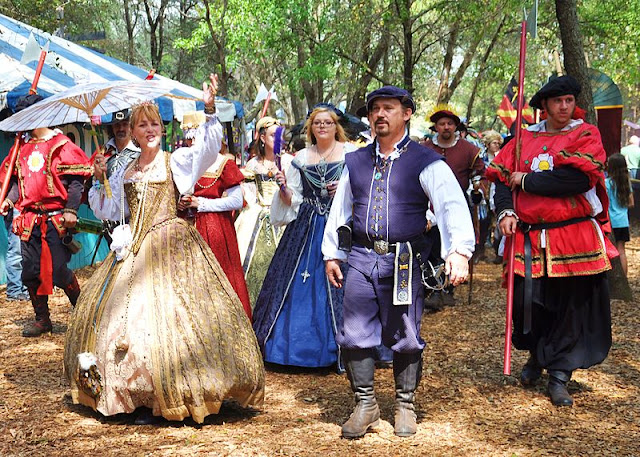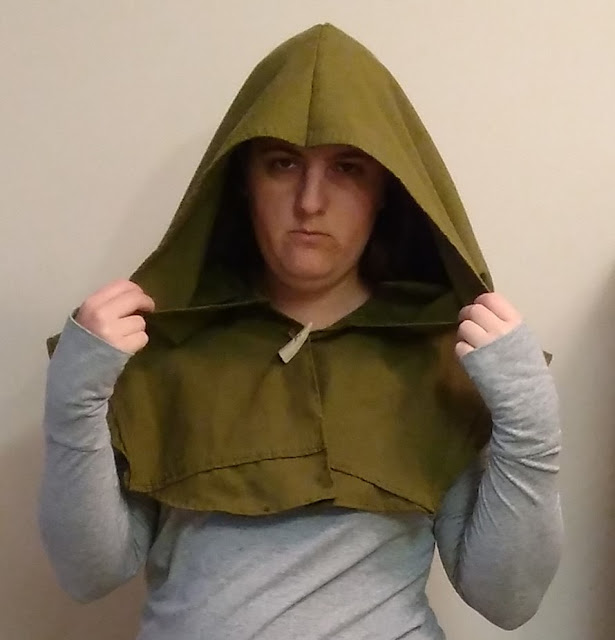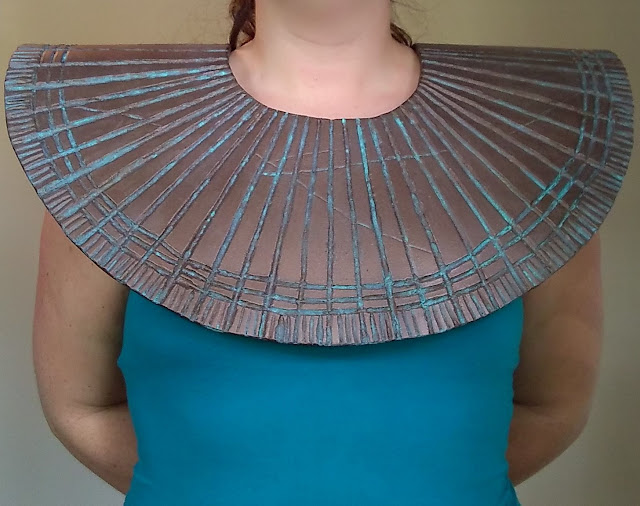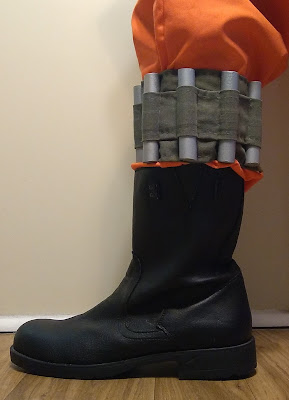Five Reasons to Love the Medieval Fair
Objectively, it looks downright silly. Arriving in the parking lot, you see a motley collection of knights, elves, monks, high-born ladies, fairies, pirates, and more emerging from their cars, making last-minute adjustments, and then setting off in search of an admission ticket and a pint of ale. The costuming is varied, unregulated as to time period or source. You are just as likely to find a Celtic warrior in woad war paint as you are to see Legolas striding through the crowd. Many of the costumes are intricate, authentic in material and fabrication, the result of months of proud work or expensive acquisition. Some are clearly the polyester pieces and plastic shields from Halloween costumes. And large contingent of revelers don’t dress up at all, or only in their best “I destroyed the One Ring at Mount Doom and all I got was this lousy t-shirt”.
So why do grown humans living in the modern age apparently take leave of their senses for a day or weekend to join other weirdos in the woods dressed in tights and corsets? If you don’t already know it shall become abundantly clear…
1. Costuming
I’d have to say my favorite part of a medieval fair is the costuming. Makes sense, right? I am currently co-writing a blog primarily about costuming and geek genres. I get a lot of joy from creating my own costume and from admiring the imagination and hard work of my fellow nerds.
Year after year I’ve gotten more drawn into creating ever more elaborate costumes and characters. When I was little it hardly mattered, the whole point of going to the fair was to see the joust and pretend I was walking through a book or back in time. But more and more I wanted to be part of the spectacle and, strangely enough, to not stick out so much. I saved my allowance to buy pieces of medieval costuming, starting with bracers and pouches and finally working up to leather tabards and swords. And then I figured I should start making basic characters, the barbarian warrior, the shaman, the temple guard, adding thrift store clothing and making masks and details.
So each year a little more elaborate and self-made, and definitely a work in progress. This year my goal is to recreate a character I devised using the backgrounds in Dungeons and Dragons, a half elf ranger. Do I play D&D? Actually, no. But I love to borrow its rules and histories to invent whole parties of adventurers to travel around in my head. Trying to emulate characters, to find or make pieces that will help tell a story creates a new challenge and offers a more involved experience in a fair.
2. Escapism fantasy
All right, who wouldn’t want to slip into the pages of a storybook world for an afternoon? The modern world of traffic, cubicles, and responsibilities can get a little stifling, and one way or another there’s the need to unwind and pretend. It’s the same reason people go to Disney World or Hawaii. In this place that is normally some woods behind a museum or county fairground, suddenly you’re saturated with drum and fiddle, costumed peasants and royalty, and plenty of themed distractions. Especially if costumed, many of the vendors and all of the cast will address you as master or mistress, lord or lady, and ask what brought you to this merry olde village. Historical accuracy is certainly not the point. In reality the Middle Ages, like any time period, had its everyday horrors that a time traveler would certainly not want to endure. People can get as close as they can to this time period through the Society of Creative Anachronism (SCA), but that’s a different sort of escapism. But if you wanted to be surrounded in a pocket world of elves and princesses and men in green tights, the medieval fair has that covered.
3. Entertainment
Even if you don’t care a bit about costumes or never really cared about King Arthur, a medieval fair is still a decent place to go. Why? Because there’s so much to see and do there. Everywhere you walk there are musicians, comedians, acrobats, fire eaters, daredevils, and swordsmen. Not to mention armored knights charging at each other on galloping horses hoping to knock each other off with giant sticks. It’s the themed, crazy mixture of a concert, stand-up show, circus, theatre, wrestling showdown, and rodeo. For a basic entry fee around twenty some bucks, that’s an amazing price for a lot of entertainment.
Also, if you’re a connoisseur of people watching, the fair provides. Outside of Burning Man, I reckon you will never find an odder group of people. Even allowing for the strangeness of costume. Retirees and children, rednecks and hippies, jocks and thespians, history nerds and fantasy geeks. Really the gamut, and a good place to meet new people, mingle with friends, or just enjoy the parade of strangers.
5. Education
Like I said earlier, historical accuracy isn’t really the main event for the medieval fair. But it is a great place to learn bits and pieces of historical truth, and certainly kindles interest in history for children and adults. Each year the fair has their cast tweak their scripts and costuming to set the event around a different place and time period. Sometimes it is actually based on a real documented conflict, or around a conflict that would not be out of place in that time. There’s creative license in the performance of course, but it does expand understanding of the relationships of nations and peoples of the age. More directly, there are lots of activities that will teach you real methods of combat, blacksmithing, candle-making, court etiquette, etc. And naturally it spurs interest in all the details of medieval life, from crafting to heraldry. But it informs without making it a chore, which is ideal for kids, and is a good stepping stone into the more intense hobby of SCA. If one were so inclined.
Picture Credits
Walter: https://commons.wikimedia.org/wiki/File:Bay_Area_Ren_Fair_Tampa_2012_Royal_Parasol.jpg
Walter: https://commons.wikimedia.org/wiki/File:Tampa_Bay_Ren_Fest_Fairy_Dance.jpg
Walter: https://commons.wikimedia.org/wiki/File:Bay_Area_Renaissance_Festival,_Tampa,_Florida_2.jpg
mbarrison: https://www.flickr.com/photos/barrison/5513091282
Walter: https://commons.wikimedia.org/wiki/File:King_of_the_Tampa_Ren_Fest.jpg
So why do grown humans living in the modern age apparently take leave of their senses for a day or weekend to join other weirdos in the woods dressed in tights and corsets? If you don’t already know it shall become abundantly clear…
1. Costuming
I’d have to say my favorite part of a medieval fair is the costuming. Makes sense, right? I am currently co-writing a blog primarily about costuming and geek genres. I get a lot of joy from creating my own costume and from admiring the imagination and hard work of my fellow nerds.
Year after year I’ve gotten more drawn into creating ever more elaborate costumes and characters. When I was little it hardly mattered, the whole point of going to the fair was to see the joust and pretend I was walking through a book or back in time. But more and more I wanted to be part of the spectacle and, strangely enough, to not stick out so much. I saved my allowance to buy pieces of medieval costuming, starting with bracers and pouches and finally working up to leather tabards and swords. And then I figured I should start making basic characters, the barbarian warrior, the shaman, the temple guard, adding thrift store clothing and making masks and details.
So each year a little more elaborate and self-made, and definitely a work in progress. This year my goal is to recreate a character I devised using the backgrounds in Dungeons and Dragons, a half elf ranger. Do I play D&D? Actually, no. But I love to borrow its rules and histories to invent whole parties of adventurers to travel around in my head. Trying to emulate characters, to find or make pieces that will help tell a story creates a new challenge and offers a more involved experience in a fair.
2. Escapism fantasy
All right, who wouldn’t want to slip into the pages of a storybook world for an afternoon? The modern world of traffic, cubicles, and responsibilities can get a little stifling, and one way or another there’s the need to unwind and pretend. It’s the same reason people go to Disney World or Hawaii. In this place that is normally some woods behind a museum or county fairground, suddenly you’re saturated with drum and fiddle, costumed peasants and royalty, and plenty of themed distractions. Especially if costumed, many of the vendors and all of the cast will address you as master or mistress, lord or lady, and ask what brought you to this merry olde village. Historical accuracy is certainly not the point. In reality the Middle Ages, like any time period, had its everyday horrors that a time traveler would certainly not want to endure. People can get as close as they can to this time period through the Society of Creative Anachronism (SCA), but that’s a different sort of escapism. But if you wanted to be surrounded in a pocket world of elves and princesses and men in green tights, the medieval fair has that covered.
3. Entertainment
Even if you don’t care a bit about costumes or never really cared about King Arthur, a medieval fair is still a decent place to go. Why? Because there’s so much to see and do there. Everywhere you walk there are musicians, comedians, acrobats, fire eaters, daredevils, and swordsmen. Not to mention armored knights charging at each other on galloping horses hoping to knock each other off with giant sticks. It’s the themed, crazy mixture of a concert, stand-up show, circus, theatre, wrestling showdown, and rodeo. For a basic entry fee around twenty some bucks, that’s an amazing price for a lot of entertainment.
Also, if you’re a connoisseur of people watching, the fair provides. Outside of Burning Man, I reckon you will never find an odder group of people. Even allowing for the strangeness of costume. Retirees and children, rednecks and hippies, jocks and thespians, history nerds and fantasy geeks. Really the gamut, and a good place to meet new people, mingle with friends, or just enjoy the parade of strangers.
4. Vendors
Besides the shows and performances, the majority of the space is given over to vendors. By and large, the widest collection of the most amazing if mostly impractical items barring the cavernous abyss called the Internet. But great fun to peruse, and ponder, and finally buckle down and purchase. The wares mainly trend towards things you only really would wear for another medieval fair. You’ll find your fill of corsets, tabards, cloaks, wands, daggers, and broadswords. Totally ridiculous, which means your geeky inner child will not be silent until you possess them all. And yet you can get plenty of other things that don’t necessarily clash with the mundane world. Handmade soaps, candles, incense, essential oils, leatherwork, pottery, wood-carving, brewing kits, herbs, spices, and plenty of fantastic art and jewelry are available, enough to rival any art show or high-end farmers market. If all this isn’t enough to satisfy a need to empty the wallet, the fair adds other fripperies like henna tattoos, fortune-telling, archery, and knife-throwing. And then there’s the food and drink. All right, the food’s OK. It’s basically county fair food, with some medieval themed items like bread bowls and the infamous turkey legs. 5. Education
Like I said earlier, historical accuracy isn’t really the main event for the medieval fair. But it is a great place to learn bits and pieces of historical truth, and certainly kindles interest in history for children and adults. Each year the fair has their cast tweak their scripts and costuming to set the event around a different place and time period. Sometimes it is actually based on a real documented conflict, or around a conflict that would not be out of place in that time. There’s creative license in the performance of course, but it does expand understanding of the relationships of nations and peoples of the age. More directly, there are lots of activities that will teach you real methods of combat, blacksmithing, candle-making, court etiquette, etc. And naturally it spurs interest in all the details of medieval life, from crafting to heraldry. But it informs without making it a chore, which is ideal for kids, and is a good stepping stone into the more intense hobby of SCA. If one were so inclined.
Picture Credits
Walter: https://commons.wikimedia.org/wiki/File:Bay_Area_Ren_Fair_Tampa_2012_Royal_Parasol.jpg
Walter: https://commons.wikimedia.org/wiki/File:Tampa_Bay_Ren_Fest_Fairy_Dance.jpg
Walter: https://commons.wikimedia.org/wiki/File:Bay_Area_Renaissance_Festival,_Tampa,_Florida_2.jpg
mbarrison: https://www.flickr.com/photos/barrison/5513091282
Walter: https://commons.wikimedia.org/wiki/File:King_of_the_Tampa_Ren_Fest.jpg








Comments
Post a Comment